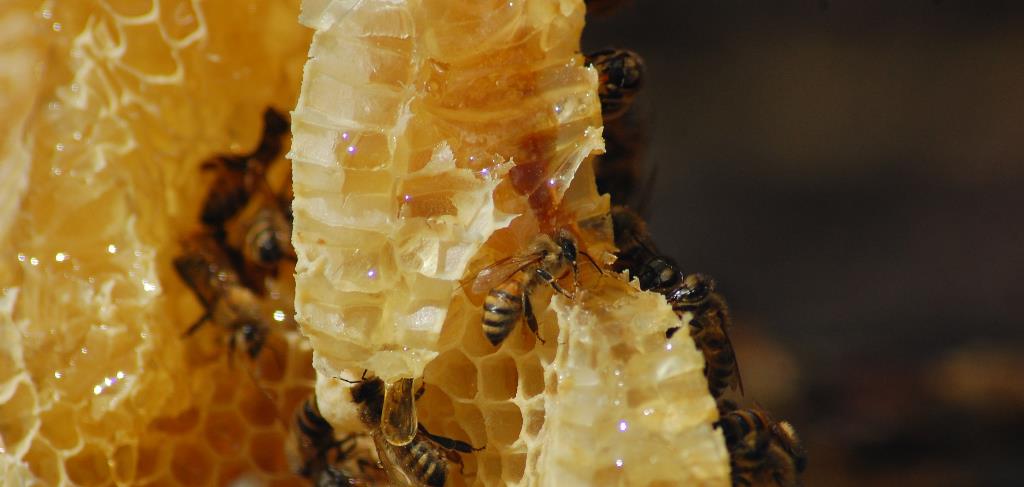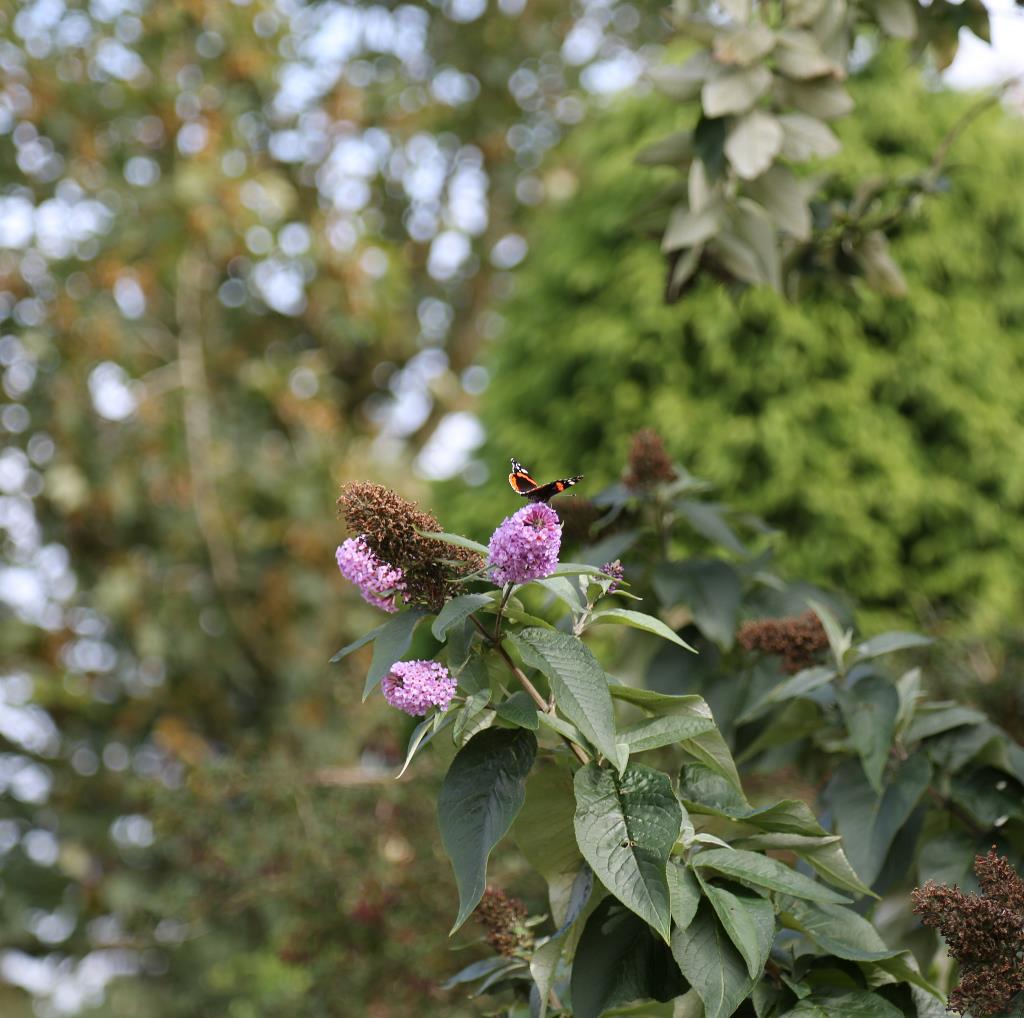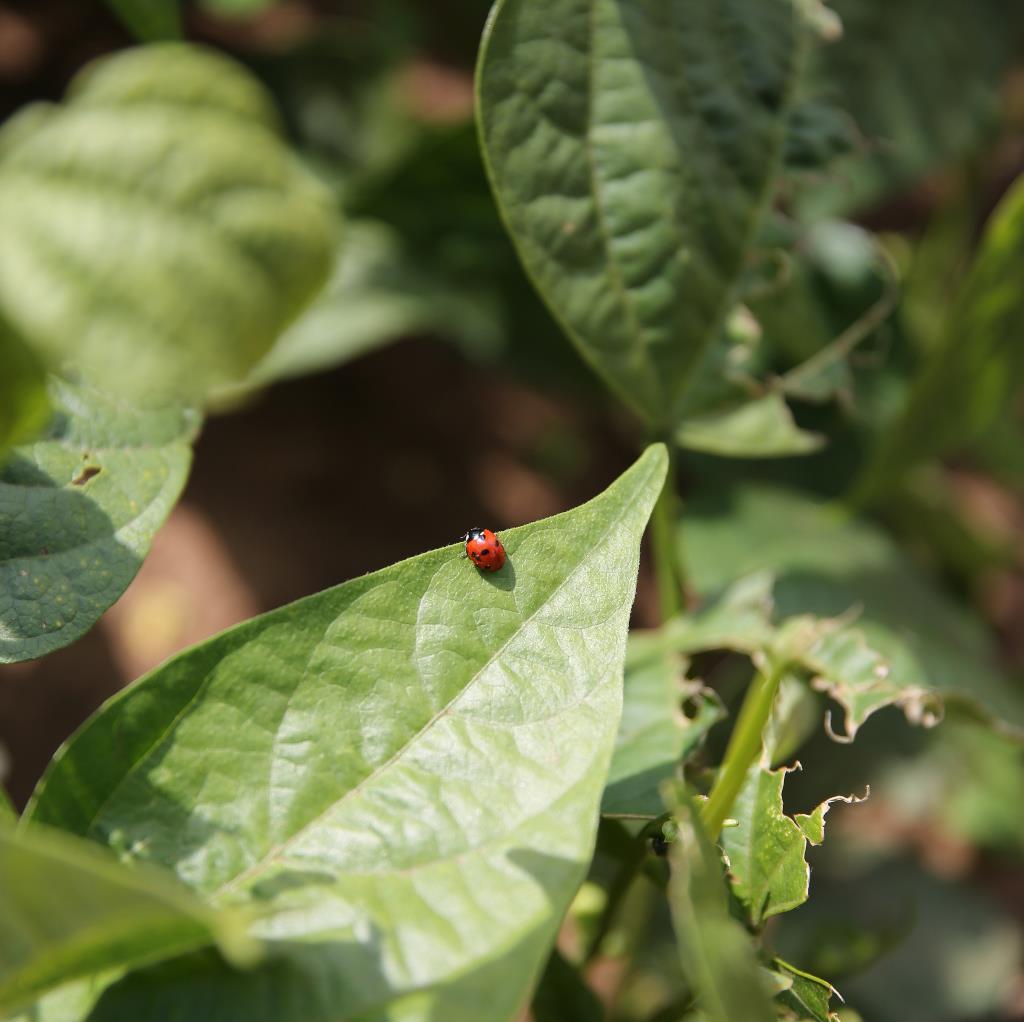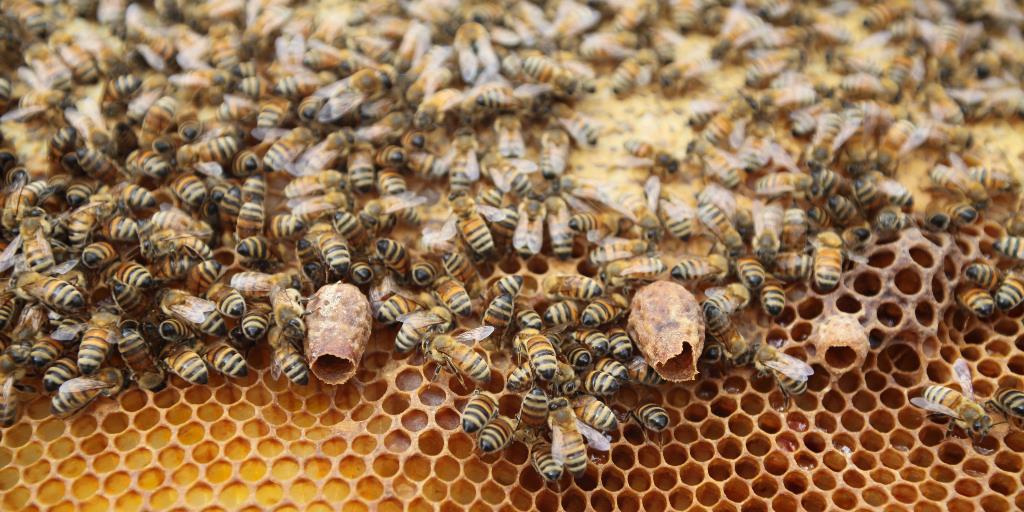Our Green Team spoke with Dr Karin Alton, of the Laboratory of Apiculture and Social Insects at the University of Sussex. As organic advocates, we know how important pollinators are to a happy, healthy farm. But with the insect population in steep decline, how can we bee friendly to our buzzing companions?
How to save the bees

What are the main causes for the decline in bee numbers?
"There are a number of reasons for the decline in bees and other flower visitors. According to scientists the most significant ones are agricultural intensification, so changes in agricultural practices, including the use of pesticides, herbicides and fertilisers, and also urbanisation. These two changes in land use act to reduce suitable habitats and therefore food and nesting resources for our pollinating insects, and, of course, other wildlife too. Climate change also plays a significant role, as do, for honey bees in particular, pests such as the varroa mite, and fungal and bacterial diseases of the young of honey bees."
What would really happen to us if the bees disappeared?
"Bees are unlikely to disappear, and don’t forget, we also have many other pollinators such as hoverflies, but if they did, we would have a severely restricted diet of mainly wind pollinated crops (and livestock not dependant on insect-pollinated feed). We would lose many of the colourful foods, for instance strawberries, peppers and courgettes, that make our diets healthy and delicious. So, let’s not go down that route! It’s up to us to be mindful of the needs of our pollinators and help protect them all."
How much food do bees need?
"A strong honey bee colony will produce and consume 300 kg of honey a year (which is the equivalent to several million honey bee foraging flights). They also need roughly 20-30kg of pollen a year to help feed the young bees (maybe 20 million flights). Each honey bee colony would need the annual floral equivalent of 1 hectare of borage or 8.3 hectares of lavender. So that is many flowers! How about bumble bees? A colony of about 250 individuals needs roughly 1 kg of sugar, that’s the same as visiting about 740,000 flowers (another 240,000 flowers would provide the required pollen protein). And that’s just one small colony of bumbles bees! What about all our other flower-visiting insects…we just don’t know yet…more research is needed."


Should I get a hive?
"Keeping honey bees is quite a task, and an expensive but enjoyable hobby. You will need a hive (preferably two), to keep the bees in. Hives are usually made of wood, but you can now buy polystyrene boxes too. Then you need the wax frames, on which the bees live. It is useful to have replacement boxes to manage the spring/summer swarming season, and you will need some tools, such as a hive tool and a smoker. Also a beesuit will come in handy. Most importantly, you need training! Get in touch with your local beekeeping organisation, they will offer advice and a training programme. Just be aware, you DON’T need a hive to help bees. Plant flowers and the bees will come to visit you for free!"
What are the best flowers for bees and pollinators?
"There are lots of lovely plants you can grow in your garden throughout the seasons. Spring bulbs such as crocus and snowdrops, summer flowering hardy geraniums, alliums, climbing open roses, foxgloves, thyme and marjoram, chives and pot marigolds, or plants such as lavender, small sedums and asters, and hebes. Many shrubs and trees are also good. Dandelions and other wildflowers are also very beneficial for lots of species of bees and other flower-visiting insects. Or grow a packet of seeds such as Phacelia, or a mixed packet of flowers to grow right through the season. Finally, go to your local garden centre or plant nursery on a sunny day and have a look at the flowers; the bees will tell you what they like!"

What can I do if I don’t have a garden?
"Everyone can help the bee revolution! Do you have any community spaces that you could adopt and spruce up with some bee friendly flowers? How about your local park; get in touch with the council and ask if they are willing to give you, and perhaps some friends, a space to grow flowers. Start small, and watch your project grow as more and more people enjoy the blooms and the bees. How about your work environment; maybe you could grow flowers in a neglected space? Ask at the local DIY store if they can spare you and your group some plants, you never know! Good luck and bee creative!"
Apart from growing flowers, what else can people do to help bees?
"Read up about all our wonderful and helpful pollinators, become aware of what is happening to our wildlife, both nationally and globally. Support charities who actively create habitats and refuges for them. And best of all, donate to the vital research we carry out at The Laboratory of Apiculture and Social Insects at The University of Sussex, to help understand how to best help pollinator health and wellbeing."


